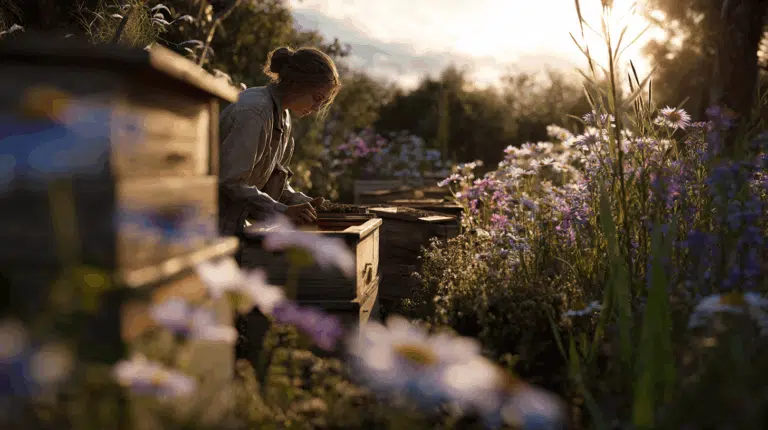Scabiosa is an elegant, long-flowering plant with tweezer-shaped flowers in blue, purple, pink, or white. Ideal for borders, pots, or as a cut flower, it attracts bees and butterflies.
With Scabiosa seeds from EasySeeds.eu, you can bring elegance and charming color to your garden and bouquets. Growing scabiosa from seed as a cut flower is ideal for gardeners who want to enjoy flowers with a romantic appearance. Scabiosa, also known as scabiosa , is known for its soft, rounded flower heads in various colors, including blue, purple, pink, and white. These flowers are beloved for their graceful shape, long blooming period, and excellent vase life.
Graceful flowers and a decorative appearance.
Scabiosa produces elegant, rounded flowers with delicate petals that create an airy effect in bouquets and borders. The colors range from soft pastels to intense shades, adding a playful and romantic touch.
Long-lasting blooms and easy care:
Scabiosa blooms from late spring to early autumn and retains its beauty long after cutting, making them ideal for fresh bouquets and flower arrangements. They are easy to grow and suitable for both novice and experienced gardeners.
Versatile and bee-friendly.
The flowers attract bees, butterflies, and other beneficial insects, contributing to biodiversity and a healthy garden environment. Scabiosa is suitable for borders, flowerbeds, and pots.
Cut flowers for bouquets – The round flower heads and graceful stems make Scabiosa perfect for fresh and dried bouquets.
Borders & beds – Add structure, height, and romantic color to your borders with these charming cut flowers.
Pots and containers – Compact Scabiosa varieties are ideal for pots, balcony boxes and patios.
Combinations with other cut flowers – Mix Scabiosa with Zinnia, Lathyrus or Dianthus for a colourful and elegant effect in bouquets and borders.
Sowing time – Sow indoors from February to April or directly outdoors after the last frost for an optimal start.
Soil & Location – Use well-draining seed compost and choose a sunny to partially shaded location.
Care – Keep the soil moist during germination and the early growth phase; feed regularly for strong, healthy plants.
Hardening off – Gradually acclimatise young plants to outdoor conditions before planting them out permanently.
Maintenance – Remove wilted flowers (deadheading) to prolong flowering and maintain healthy stems.
At EasySeeds.eu, you'll find a wide range of Scabiosa (Fluorophyllum) seeds , selected for their germination rate, color variation, and flowering intensity. Whether you want to fill borders, embellish pots, or create romantic bouquets yourself, our Scabiosa seeds will help bring your garden and bouquets to life in every season.
🌸 Discover our range now and order easily online – buy Scabiosa seeds at EasySeeds.eu!

Scabiosa, or scabiosa, is an elegant and long-flowering plant known for its unique flower heads with a spherical "pincushion" center surrounded by delicate petals.
There are both annual ( Scabiosa atropurpurea ) and perennial ( Scabiosa caucasica ) varieties. This means you can choose varieties that bloom for one season or those that recur for several years.
It's best to start Scabiosa seeds indoors 6 to 8 weeks before the last expected frost. Direct sowing outdoors is also possible in early spring, as soon as the risk of frost has passed.
Sow the seeds shallowly, covering them with a thin layer of soil (about 0.5 cm). Some varieties require light to germinate.
For successful germination, a constant temperature of 18-21°C is ideal.
Harvest the flowers when the buds are just beginning to open or are half-open. This will ensure a longer vase life.
Yes, Scabiosa is an excellent attraction for bees, butterflies, and other pollinators, thanks to its nectar-rich flowers. The flower heads of Scabiosa provide an easy landing platform and ample nectar for pollinators. Some species, such as the common scabiosa, are particularly popular with bumblebees.
Scabiosa is generally a robust plant. The biggest concern is root rot, caused by excessive moisture. Other potential problems include powdery mildew, aphids, and mites.
Prevent root rot by ensuring well-draining soil, avoiding overwatering, and watering at the base of the plant to prevent excess moisture from accumulating on the leaves.